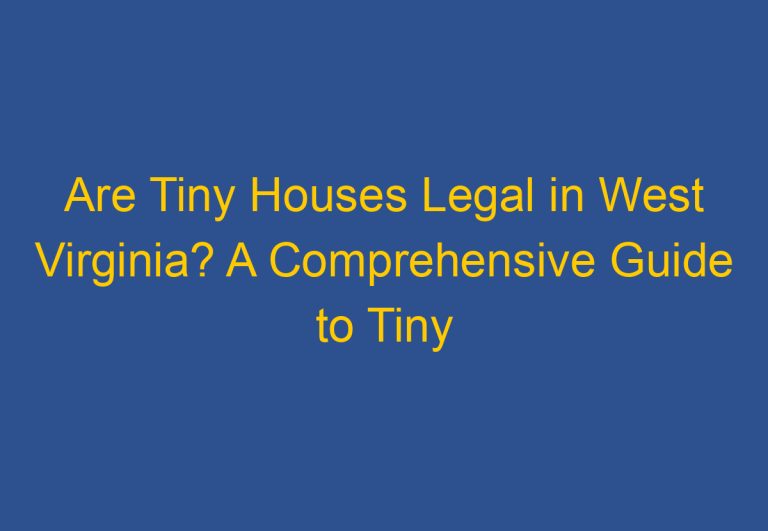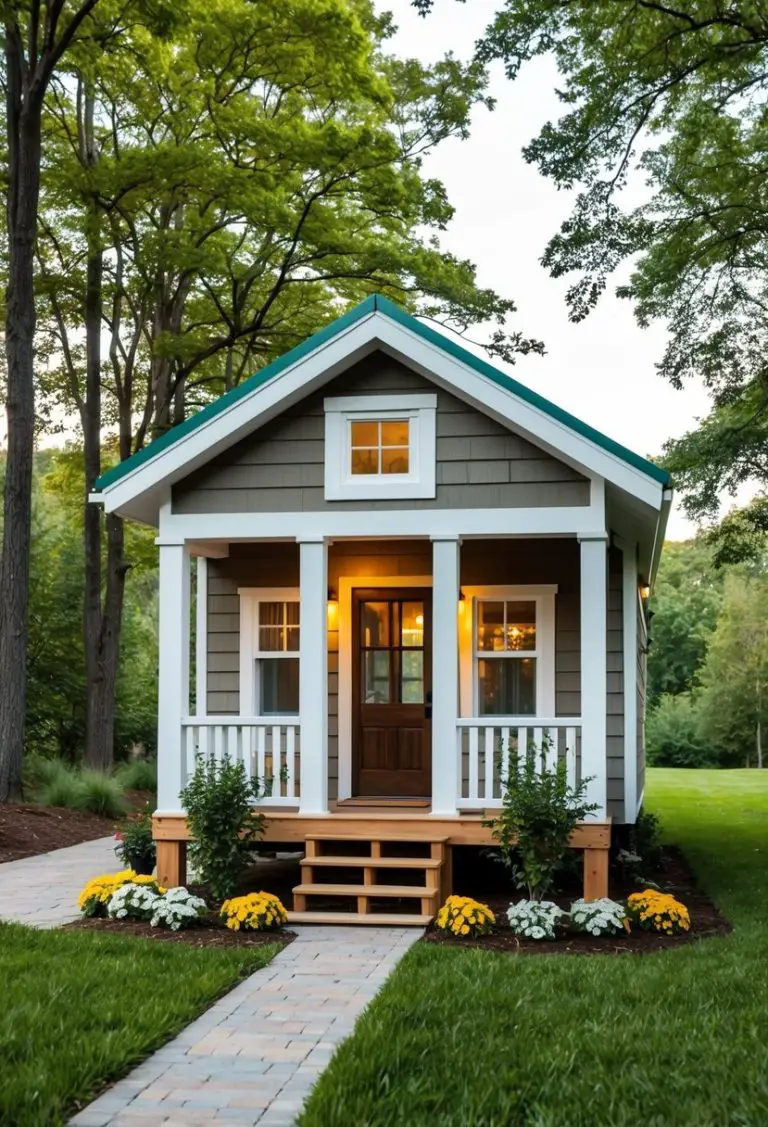Are Tiny Houses Legal in Puerto Rico? A Comprehensive Guide to Tiny House Regulations in Puerto Rico
Tiny houses have become increasingly popular in recent years, as many people seek affordable and innovative housing solutions. However, the legality of tiny houses varies from state to state and even from city to city. As such, it is important to know whether tiny houses are legal in Puerto Rico, and what regulations and restrictions apply to them.
According to UpCodes, Puerto Rico has specific regulations regarding tiny houses. Habitable spaces and hallways in tiny houses must have a ceiling height of not less than 6 feet 8 inches, while bathrooms, toilet rooms, and kitchens must have a ceiling height of not less than 6 feet 4 inches. Additionally, obstructions such as beams, girders, ducts, and lighting cannot extend below these minimum ceiling heights. These regulations ensure that tiny houses in Puerto Rico meet certain quality and safety standards.
Despite these regulations, there are still questions about the legality of tiny houses in Puerto Rico. However, with the founding of Tiny House PR, INC. in 2020, it is clear that there is a growing interest in tiny houses in Puerto Rico. This company offers seasoned builders and installers who can turn visions of tiny homes into tangible structures. As such, it is clear that tiny houses are a viable and legal housing option in Puerto Rico for those who want to live affordably and innovatively.
Legality and Building Codes
Zoning Laws and Regulations
Puerto Rico does not have specific zoning laws or regulations for tiny homes. However, local municipalities may have their own regulations that must be followed. It is important to consult with the local zoning board before building a tiny home to ensure compliance with all regulations.
Construction Standards for Tiny Homes
The Puerto Rico Residential Code 2018 is based on the International Residential Code 2018 (IRC 2018) with amendments and additions. Tiny homes must comply with the same construction standards as traditional homes. Habitable space and hallways in tiny houses shall have a ceiling height of not less than 6 feet 8 inches (2032 mm). Bathrooms, toilet rooms, and kitchens shall have a ceiling height of not less than 6 feet 4 inches (1930 mm). Obstructions including, but not limited to, beams, girders, ducts, and lighting, shall not be less than 6 feet 4 inches (1930 mm) above the finished floor.
Certification and Inspections
Certification and inspections for tiny homes in Puerto Rico are required by law. The Puerto Rico Building Code requires that all buildings, including tiny homes, must be inspected during construction and after completion. Electrical and plumbing systems must be installed by licensed professionals and meet all applicable codes.
In summary, tiny homes are legal in Puerto Rico as long as they comply with all applicable building codes and regulations. It is important to consult with local zoning boards and building officials before beginning construction.
Living in Tiny Houses in Puerto Rico
Lifestyle and Community
Living in a tiny house in Puerto Rico can offer a unique and sustainable lifestyle. The tiny house movement is gaining popularity in Puerto Rico, and many communities are embracing this new way of living. Tiny house communities are being developed, and these communities offer a sense of community and belonging. Living in a tiny house allows people to live a simpler life, reduce their environmental footprint, and focus on what is truly important to them.
Utility Connections and Infrastructure
One of the challenges of living in a tiny house is the lack of infrastructure. Tiny houses are often built off-grid, meaning they are not connected to the traditional utilities such as water, electricity, and sewage. However, many tiny house communities in Puerto Rico have developed innovative solutions to these challenges. For example, some communities have developed shared utility systems, such as shared water wells and solar panels. These solutions allow tiny house residents to live sustainably while still enjoying the comforts of modern living.
Economic and Environmental Benefits
Living in a tiny house in Puerto Rico can also offer economic and environmental benefits. Tiny houses are often more affordable than traditional homes, and they require less maintenance and upkeep. Additionally, tiny houses have a smaller environmental footprint, as they use fewer resources and produce less waste. Tiny houses can also be used as rental properties, such as Airbnb rentals, providing an additional source of income.
Overall, living in a tiny house in Puerto Rico can offer a unique and sustainable lifestyle. With innovative solutions to infrastructure challenges, a sense of community, and economic and environmental benefits, tiny houses are becoming an increasingly popular housing option in Puerto Rico. Whether you are looking for a permanent residence, a vacation home, or a rental property, a tiny house may be the perfect solution for you.
Frequently Asked Questions
What are the zoning regulations for tiny houses in Puerto Rico?
The zoning regulations for tiny houses in Puerto Rico vary by municipality. It is important to research the specific zoning regulations in the area where you plan to build or park your tiny house. In general, tiny houses are often classified as accessory dwelling units (ADUs) and may be subject to the same zoning regulations as other types of ADUs.
Can you permanently reside in a tiny home in Puerto Rico?
Yes, it is possible to permanently reside in a tiny home in Puerto Rico. However, it is important to ensure that your tiny home complies with all applicable zoning regulations and building codes.
What is the maximum allowable size for a tiny house in Puerto Rico?
There is no maximum allowable size for a tiny house in Puerto Rico. However, it is important to ensure that your tiny home complies with all applicable zoning regulations and building codes.
Are there specific cities in Puerto Rico that are known to be tiny home-friendly?
There are no specific cities in Puerto Rico that are known to be particularly friendly to tiny homes. However, some municipalities may have more lenient zoning regulations and building codes than others.
What building codes apply to tiny houses in Puerto Rico?
Tiny houses in Puerto Rico are subject to the same building codes as other types of residential structures. It is important to ensure that your tiny home complies with all applicable building codes, including those related to electrical, plumbing, and structural systems.
How does Puerto Rico’s legislation on tiny houses compare to other states?
Puerto Rico’s legislation on tiny houses is similar to that of many other states. However, it is important to research the specific regulations and building codes in the area where you plan to build or park your tiny house.










